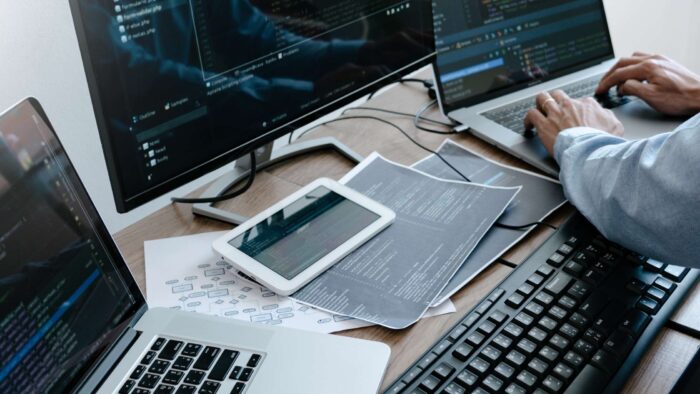Cybersecurity experts estimate there are some 2,200 cyberattacks every day. The number of attacks has risen since employees began working from home.
The concerning trend is naturally a concern for IT professionals. Remote workers are an easy target for bad actors. Home networks are generally less secure than a business network and it’s harder to police how remote workers use their devices or where they work.
Companies that deploy a distributed workforce, either within a hybrid model or fully remote, cannot expect to successfully protect business data falling into the hand of hackers without using remote active monitoring (RAM) software.
Remote active monitoring software is designed to help IT professionals maintain the running performance of a business network. And that includes ensuring your systems are not compromised by threat actors.
All in all, remote monitoring software is imperative for facilitating productivity by ensuring your business network is in good working order. And equally as important, if not more so, keeping the sensitive data of your customers safe.
However, RAM software could be a contentious addition to your business practices.
What is remote active monitoring software?

Source: timedoctor.com
The fundamental use of RAM software is to eliminate the threat of malicious actors. Its deployment is even more relevant now that malicious actors have switched their focus towards targeting small businesses that hire work-from-home employees.
It’s no secret that remote working represents a higher security risk than assembling your workforce under one roof. No matter how carefully you draft your security protocols, policing network security is harder to perform without remote active monitoring. Cybersecurity awareness training for your staff can help, however.
Threat actors seek to take advantage of remote workers that are not fully protected. The best hackers can identify security flaws in business software and common hardware devices – particularly as the flaws are announced in public domains when they have been identified by security firms. Thanks for that.
Hackers can also find gateways in unsecured Wi-Fi networks which can leave businesses exposed if employees are working in public Wi-Fi that is unsecured. Likewise, if employees use the same device for personal and professional use, there is a higher risk of experiencing a data breach.
RAM detects suspicious behaviour within an app or from a device that is connected to the network. For example, if hackers try to brute force a password, RAM software will shut down the account and lock out the user until you have had the opportunity to verify the user trying to obtain access.
Whilst other security measures such as two-way authentication, VPN service, anti-virus software and encrypted devices still have a place in your cybersecurity setup, RAM is the next level of protection – thanks to its capacity to track online activity in a live environment.
But this is where RAM can become controversial.
The Downside To Remote Active Monitoring

Source: griffinbenefits.com
Security chiefs have decided that identifying physical locations and verifying users via text or email is not sufficient to avoid the risk of a successful cyberattack. They think webcam security offers more protection.
Subsequently, RAM software is available that allows employers to verify who is in ownership of a device that is trying to access your business network. One of the fears of remote working or BYOD models is that a stolen or lost device could be used by bad actors to access business accounts.
In some countries, spying on your employees is illegal. In European countries and the UK, however, there is little to no protection for employees. The irony here is that GDPR doesn’t protect the public either but is enforced on businesses anyway. Are you still receiving high amounts of spam?
The ability for employers to use RAM to “verify” the identity of users also gives managers the capacity to monitor employee performance and the number of hours they are active on their computers.
So if a manager has doubts over whether a certain employee is putting in the time they claim they are, RAM can be used to assess whether their claims are true by tracking software data to determine when they were active, what tasks they performed and how long they were idle for.
The Bottom Line
Cybersecurity can be frustrating for IT professionals and whilst remote active monitoring enhances your defensive layers, companies must be careful how they utilise the full capabilities of the software.




